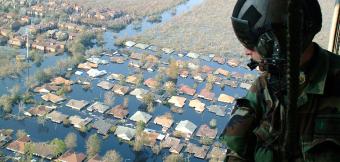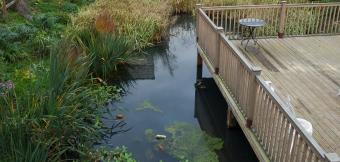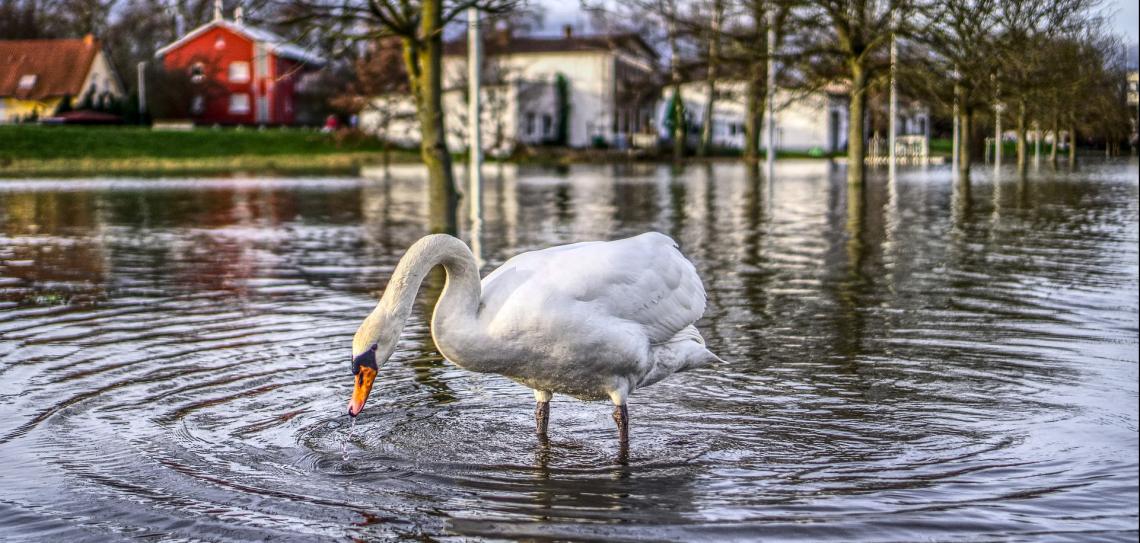
Design for floods
Flooding poses a major threat to property and life. Climate change is creating more floods through sea level rise, stronger storms and more intense rainfall events. Simple defences like sand bags, low walls and drainage ditches help protect your home, but some locations need major flood adaptations.
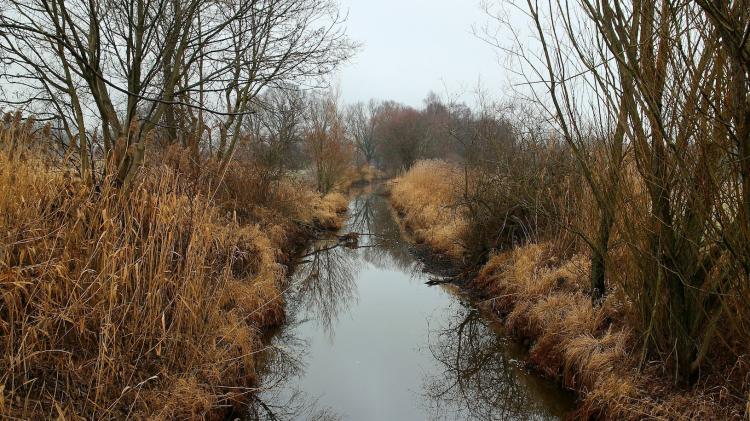
This action deals with designing to protect your home against floods. The wider area is covered by Action 13: 'Manage water in the landscape'.
Assessing the risks
Local news reports from the past decade, flood plain maps, conversations with neighbours and historical records are all useful in identifying flood risk. This can be very localised; one house may flood, while the neighbouring house does not. So carefully consider site gradient, features that will direct water into or away from your house (especially roads and driveways), places water flow may get trapped and whether your doorways are above the level of your garden. Remember that floods are often accompanied by very strong winds.
Coastal flooding is a major risk for the 634 million people who live less than 30 feet above sea level. Simultaneous high tide, full moon and storm surge can produce 'coastal' flooding up to 30km/20 miles inland. Does this expose you to risk?
Flood plains are areas where water collects following heavy rainfall. Normally placid rivers can burst their banks and go over the top of flood walls. Paving over large areas has greatly increased risks in urban flood plains. In the USA alone, 100 million people live on flood plains. Do you?
Flash floods have a timescale of less than six hours between rainfall and flooding, posing a serious threat to property and life. They may be caused by heavy rain, meltwater or the collapse of a natural or human-made dam. Consider the routes that unexpected high water would take through your local area.
A mud slide is a rapid flow of partially liquefied soil debris. Some mud flows are slow, but others begin very quickly and continue like an avalanche. If large enough, they can devastate villages and the whole landscape. Is there some possibility, or historical occurrence, of mud slides near your home?
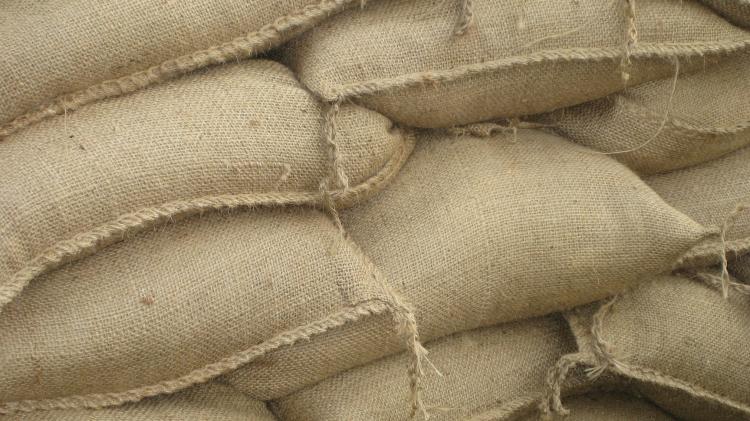
Flood control infrastructure
One key way to tackle flooding is infrastructure such as sea walls, levees, dams, weirs, storm drains, upland forests, flood meadows, strict planning and building codes and even removal of homes from at-risk areas.
For most people, creating substantial flood infrastructure is beyond their resources. However, lobby for installation and maintenance of flood infrastructure where appropriate and report any damage or neglect. Communities can create local flood infrastructure, focusing on simple measures to slow water upstream and guide it safely downstream (see Action 49: 'Campaign for local adaptation' and Action 13: 'Manage water in the landscape').
Home defence – simple improvements
At household level there are a number of actions you can take to reduce flood risk and flood damage:
- If your home has a sump pump, get a battery backup in case the power fails.
- Buy a stock of sandbags or other temporary water barriers such as inflatable tubes.
- Check your house for water entry points like doors, vents and basement windows. They can be protected with low walls, sandbags or temporary shields, or even permanently filled in or moved.
- Dig a ditch or install a yard drain to carry water away from your home; this needs careful siting.
- Check your home insurance policy covers damage from floods, and includes both contents and structure.
- Plant species that will stabilise soil against water erosion, such as Vetiver grass, Napier grass or bamboo. Plant shrubs and trees.
- In coastal areas create deep, dense areas of planting between your home and the sea.
- Make a household inventory of belongings, especially the contents in the basement.
- Mark your circuit box to show which circuits feed which parts of your house. Turning off the electricity to the basement may reduce damage in a flood.
- Keep computer files backed up on the cloud. Keep vital documents in a bag you can carry if a flood comes. Get a small waterproof safe for other important documents.
- Take action to stop flooding in the wider area (see Action 13: 'Manage water in the landscape')
- Read Action 34: 'Learn to survive an emergency' for information on survival during a flood event.
Home defence – major improvements
The Homeowner's Guide to Retrofitting by FEMA gives a thorough description of major flood-proofing for your home. All require an investment of time and money, but could save you a great deal of both.
- Wet floodproofing – make portions of your home resistant to flood damage and allow water to enter during flooding
- Dry floodproofing – seal your home to prevent floodwaters from entering
- Barrier systems – build a floodwall around your home to restrain floodwaters
- Elevation – raise your home above the likely flood level
- Relocation – move your home to higher ground
- Demolition – either rebuild on the same property or buy or build elsewhere
Picture credits: 1) distel2610 - Pixabay.com 2) Antranias - Pixabay.com 3) Canislupus - Pixabay.com
Assess your risks
Make well designed physical changes to your home and land
Work with your community to create or lobby for improved local defences
Donate to international disaster relief

